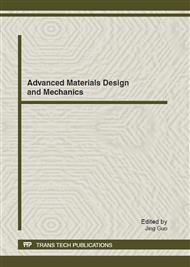p.763
p.769
p.776
p.781
p.785
p.789
p.795
p.800
p.804
Investigation to Angular Resolution in Cube-Orientation-Based Interactions
Abstract:
This study empirically explores a cube-shaped tool, focusing on the properties of its angle input. By tracking the fiducial marker on each side of the cube in real-time, basic operations such as rotating and tilting can produce the angle input modalities. We conduct an experiment that investigates the use of the angle input to perform a set of experimental tasks. In the experiment we design an angle selection task, varying the angle position and interval. The experimental results show that for rotation angle even 1 degree of angle can still be accurately discriminated whereas that limit goes beyond 3 degrees in case of tilt. A logarithm model can describe the relationship between angle interval and selection time.
Info:
Periodical:
Pages:
785-788
Citation:
Online since:
September 2012
Authors:
Keywords:
Price:
Сopyright:
© 2012 Trans Tech Publications Ltd. All Rights Reserved
Share:
Citation:


